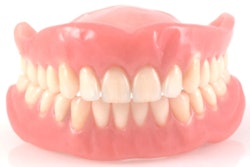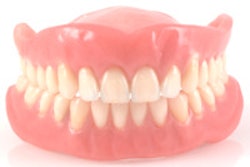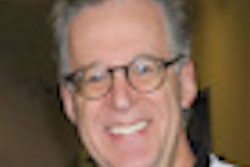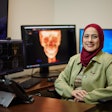
Micah Weisenberg, DDS, graduated from the University of Maryland School of Dentistry on May 14, but unlike many of his colleagues, he will not just be practicing right after school. Instead, the newly minted Dr. Weisenberg will also focus on creating a device that could modernize how dentures are made.
The device, which he is calling Air Scan, uses jets attached to an intraoral scanner that pulsate air into the narrow area between the gum and upper cheek. The design allows dentists to create denture impressions from the scanner without border molding.
"If you know five dentists, you know five different ways of making dentures. I wanted to streamline this denture-making method," Dr. Weisenberg told DrBicuspid.com. "I'm trying to replace the need to use gray stick compound ... [by] using air to load that soft tissue, with the scanner head right there to record everything."
Time and money
This past month, Dr. Weisenberg was granted a provisional patent for two different models of the device: one that is a scanner with the air jets built-in, and another that allows practitioners to retrofit the jets onto an existing scanner. He is excited by the fact the device can save dentists time and money.
 Micah Weisenberg, DDS.
Micah Weisenberg, DDS."This is the first intraoral scanner that has the potential for being able to do dentures," he said. Traditionally, "it takes up to two appointments and costs about $20 to $40 in trays and material. I'm eliminating those material costs and cutting the time."
Because air provides better moisture control, he believes that Air Scan can help practitioners take more accurate impressions of crowns and bridges than scanners currently on the market. Air can also differentiate between soft tissue and tooth structure better than other scanners that use color.
"Anything that is shifted by air pressure is soft tissue. So in my 3D rendering, anything that deforms is eliminated, so all that's left is tooth structure," he said. "We can get accurate margins."
No border molding
Although Air Scan is Dr. Weisenberg's first patent, he is always thinking about ways to improve processes. He originally came up with the idea for Air Scan after becoming frustrated with the denture-making method and seeing how his patients reacted to the wax.
"When I would come at them with a tray full of goopy impression material ... I've had several patients ask, 'Is that what you do? I thought we've gotten further than that,' " Dr. Weisenberg said. "It's a hard thing to stomach. I love the idea of just giving patients more confidence in us as dentists by using cutting-edge technology similar to other medical professions."
He began thinking about a better way to do border molding between his second and third years of dental school. After about a year of thinking it through, gathering opinions, and making revisions, he worked with University of Maryland's Office of Research & Development to get his provisional patent.
"It was a lot of late nights. You always find time for something you're passionate about, and I'm passionate about this -- and never making border molding again," he said. "I've had different ideas, but I've never taken them to this step. ... I would keep asking questions and every time I found a 'no,' I would try to think of a way to solve that problem. Eventually, when it came to this, I didn't have as many 'nos' as I thought there'd be and that's when I knew I had something worth pursuing."
Getting the device into dental offices
Dr. Weisenberg's first action after attaining Air Scan's patent was to thank his mother, who he said, "has been behind me, Lord knows how much," and now he is focusing on building a prototype within the next year.
"The University of Maryland and also the state of Maryland offer innovator initiatives that I could qualify for to help me set up my own company," he said. He is also open to collaborating with established companies and hearing what their ideas are.
Regardless of whether he starts his own company or collaborates, Dr. Wisenberg's goal is to get the device into dental offices as quickly as possible, but it will still be a few years and many steps before that happens. After the prototype is built, Air Scan must go through the clinical trials necessary to bring it to market. In the meantime, Dr. Weisenberg begins his first job as a dentist on July 1, but he's sure that being a full-time dentist won't hinder Air Scan's progress or any future ideas.
"This isn't my last idea," he said. "There will be a lot more coming down the pipeline."



















